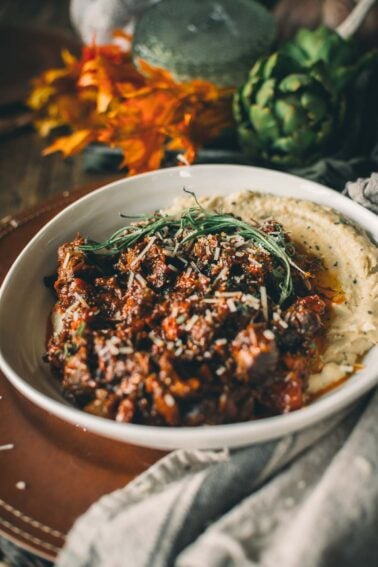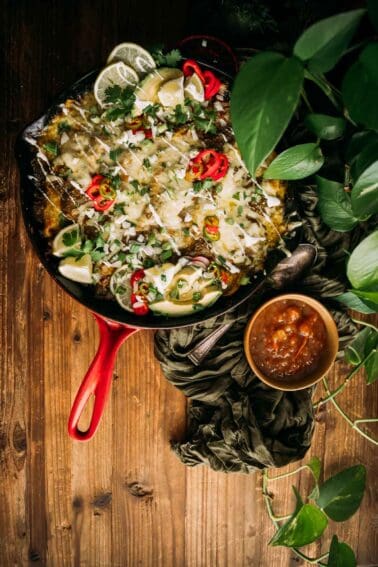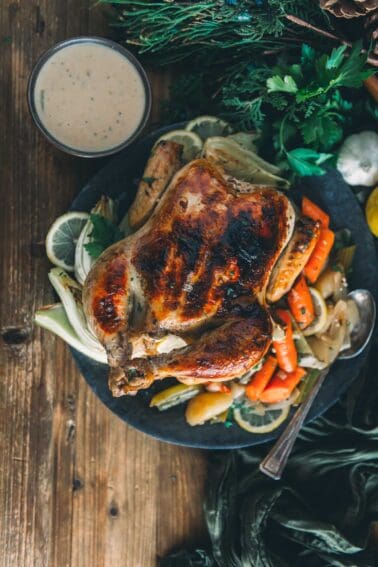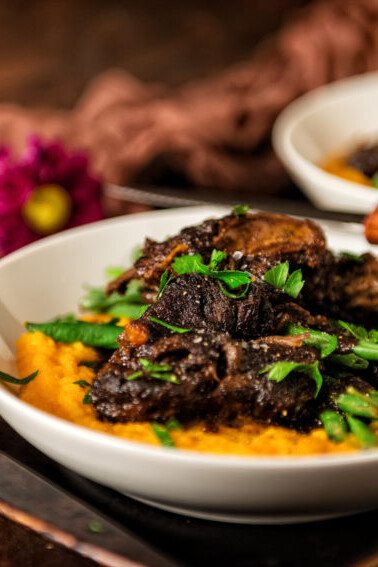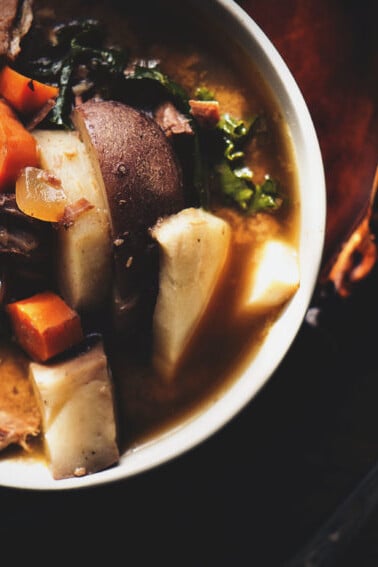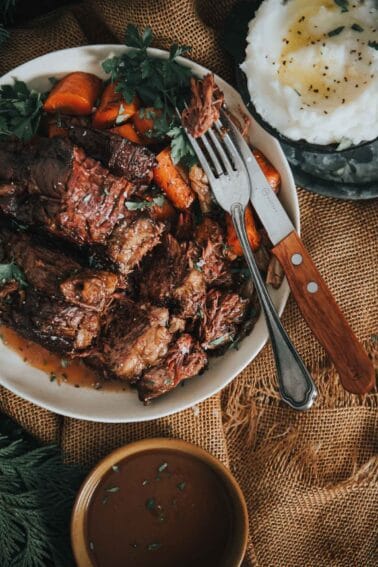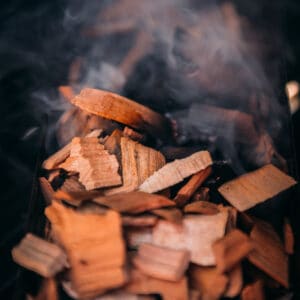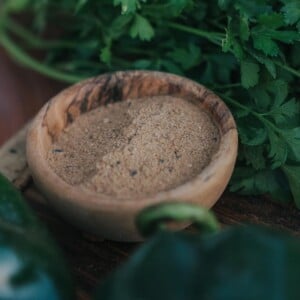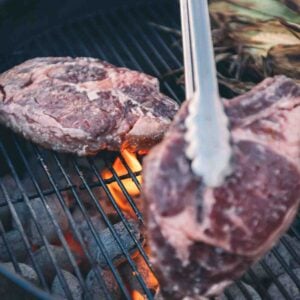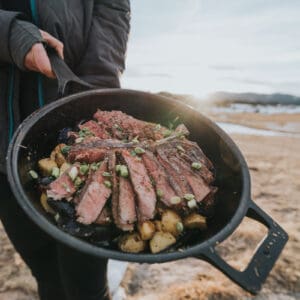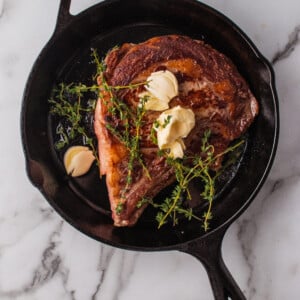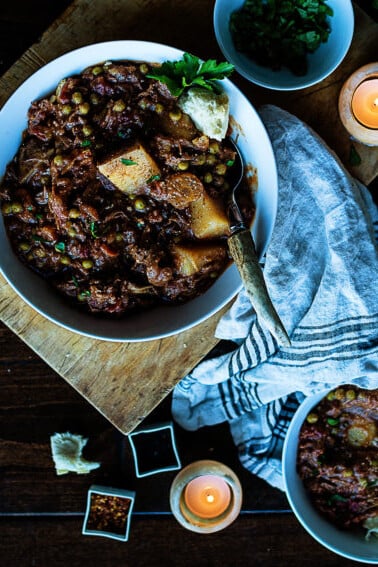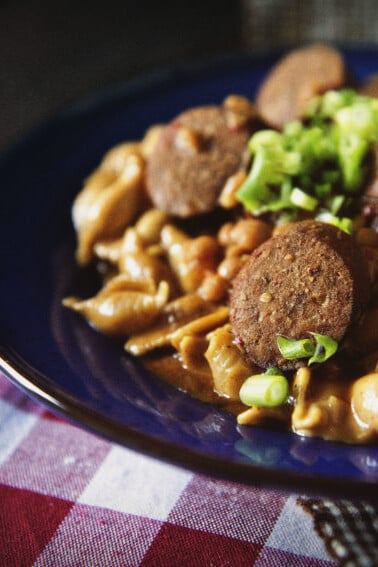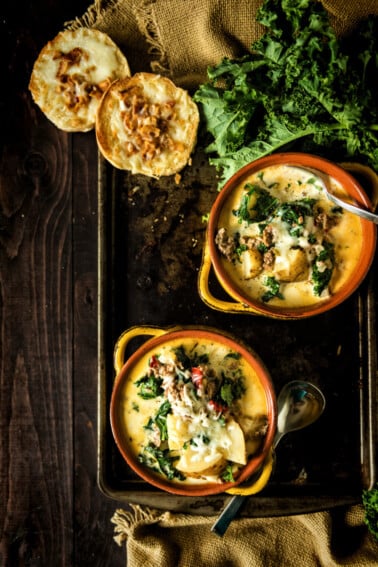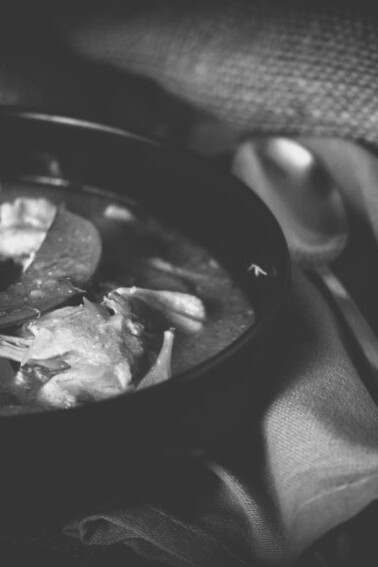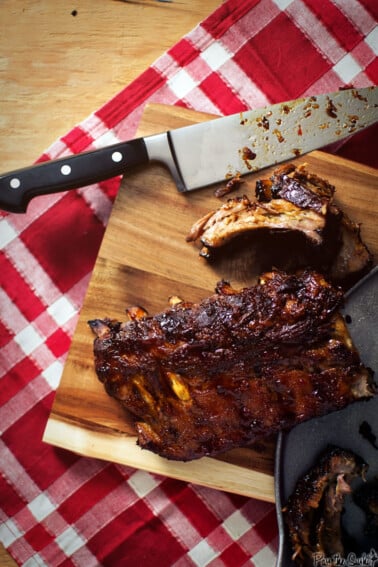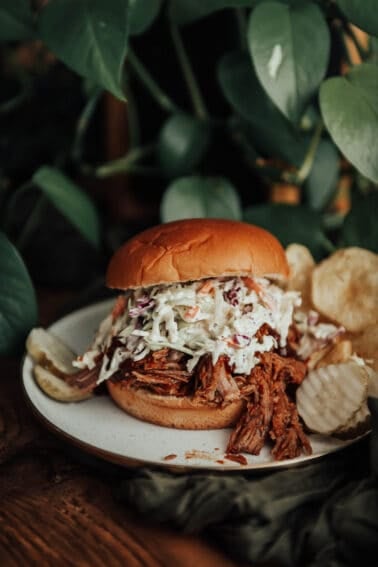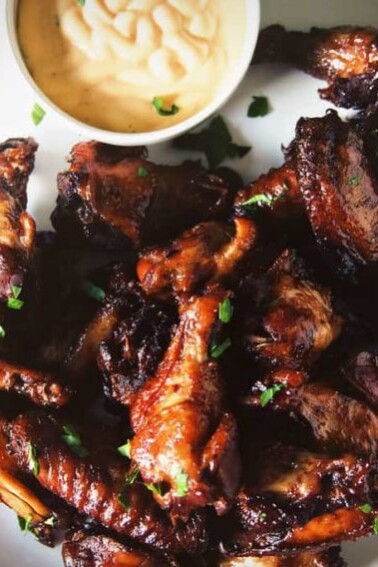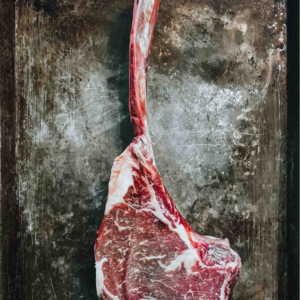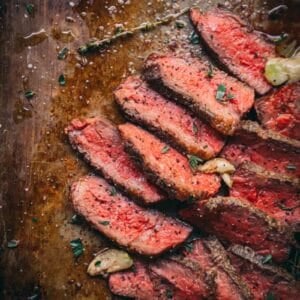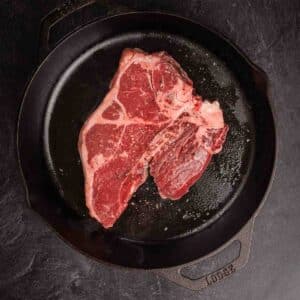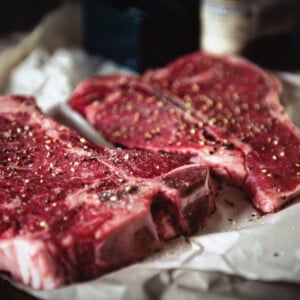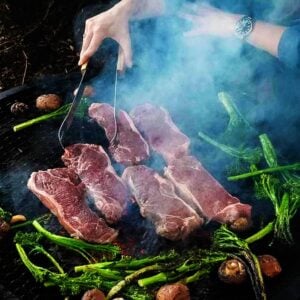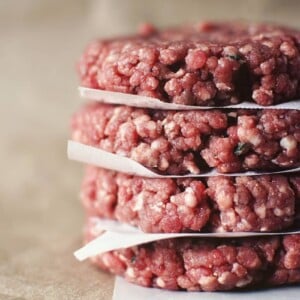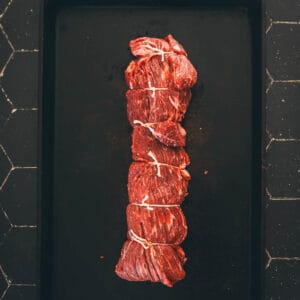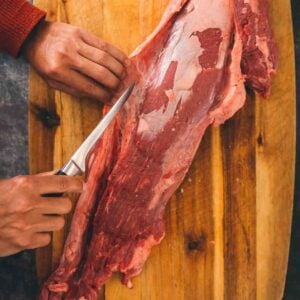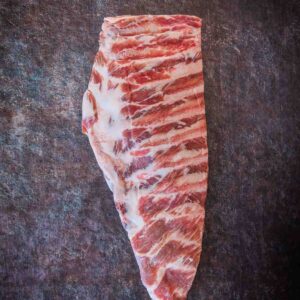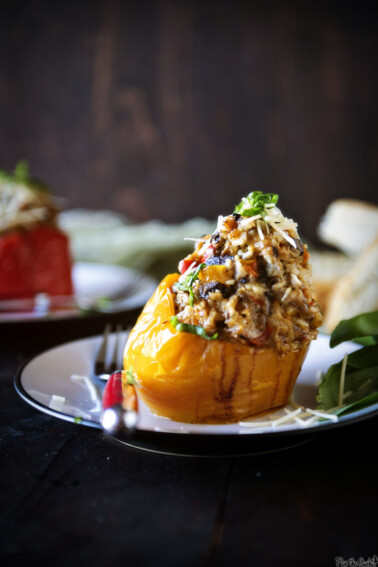Beef Recipes
The Best Slow Cooker Recipes
Recipes With Pork
Slow Cooker Pulled Pork Enchiladas
Beef Recipes
Slow Cooker Birria
Poultry Recipes
Whole Chicken in a Crock Pot
Slow cooking is a culinary technique where food is cooked at a low temperature for an extended period. This method stands out in the culinary world for its unique approach to transforming simple ingredients into rich, deeply flavorful dishes. Unlike other cooking methods that require constant attention, slow cooking is a ‘set-and-forget’ process. It allows the magic to happen gradually, bringing out the best in every ingredient.
Why Slow Cookers are a Game-Changer in the Kitchen:
- Effortless Cooking: The best thing about using a crockpot is how easy it is. You can prep your ingredients, add them to the cooker, set the temperature, and let time do the rest. This simplicity is perfect for busy lifestyles, with a hands-off approach to preparing sumptuous meals.
- Flavorful Meals Every Time: Slow cookers are great for enhancement. The long cooking times allow for better marrying of flavors, making every meal amazing. Set it and forget it letting meat become tender and succulent, making dishes that are rich and satisfying.
- Versatility in the Kitchen: From hearty stews and tender roasts to soups and casseroles, you can make an array of recipes in your slow cooker. It’s an all-in-one pot that can handle various types of meat and a multitude of recipes, making it a handy tool in any foodies kitchen.
- Energy-Efficient Cooking: Slow cookers use less energy than conventional ovens, making them an eco-friendly and cost-effective choice for meal preparation.
- Keeps the Kitchen Cool: Unlike ovens or stovetops, slow cookers don’t heat up the kitchen, a significant advantage during warmer months.
Slow Cooker Beef Recipes
Beef Recipes
Slow Cooker Short Ribs
GC Original
BBQ Brisket Tacos with Dubliner Cheese Sauce
Dinner Recipes
Slow Cooker Loaded Veggie Beef Stew
Beef Recipes
Slow Cooker Pot Roast
Helpful How-Tos
Types of Meats Best Suited for Slow Cooking
Slow cooking is a method that works well for various types of meat, turning even the toughest cuts into tender, flavorful dishes. Here are some of the meats that are suited for this cooking method and what makes them perfect for slow cooking.
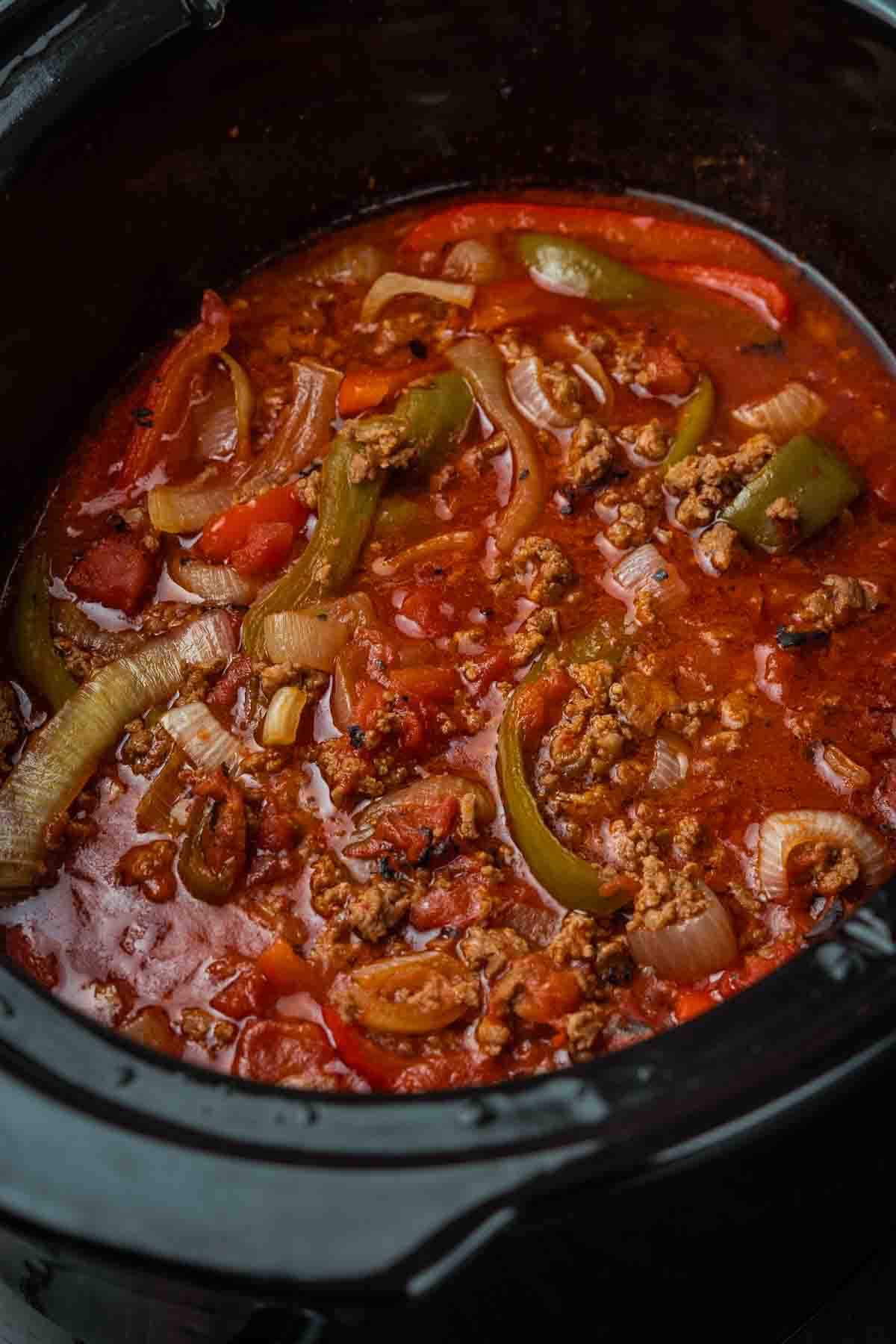
Beef: The Slow Cooker Champion
- Beef Cuts to Consider for Slow Cookers: Chuck roast, brisket, short ribs, and oxtail are excellent for slow cooking. These cuts of beef have a lot of connective tissue, which breaks down over long cooking periods, creating melt-in-your-mouth tenderness.
- Characteristics: Beef cuts typically have a robust flavor and a hearty texture. Slow cooking allows the meat to absorb spices and sauces, enhancing its natural flavors and tenderizing the tougher fibers.
Pork: Versatility and Richness
- Pork Cuts to Consider for Slow Cooker: Pork shoulder, ribs, and pork butt are ideal for the slow cooker. These cuts are fattier and become incredibly tender and flavorful when cooked slowly.
- Characteristics: Pork’s natural richness and fat content make it perfect for slow cooking. The process renders the fat, infusing the meat with flavor and ensuring juiciness in every bite.
Lamb: Subtle Elegance
- Lamb Cuts to Consider for the Slow Cooker Lamb shanks, shoulder, and leg are best suited for slow cooking. They benefit from the gentle cooking process, which softens the meat and enriches its delicate flavor.
- Characteristics: Lamb has a more unique flavor compared to beef and pork. Slow cooking lamb allows the meat to become exceptionally tender while enhancing its unique taste without overpowering it.
Chicken: For Lighter Fare
- Cuts to Consider: Thighs and drumsticks are the best choices for slow cooking. They remain moist and flavorful even after hours of cooking. Stick with skinless chicken cuts for the best texture.
- Characteristics: Chicken, especially the darker cuts, adapts well to slow cooking. The method ensures that the meat stays juicy and soaks up the flavors of herbs and spices.
Game Meats: For the Adventurous Palate
- Cuts to Consider: Venison, rabbit, and bison are excellent game meats for slow cooking. These meats are leaner and benefit significantly from the moisture-retaining cooking process.
- Characteristics: Game meats have a more intense flavor profile. Slow cooking these meats not only tenderizes them but also mellows out their gamey taste, making them more palatable.
Slow Cooker Soup and Stew Recipes
Lamb Recipes
Slow Cooker Irish Lamb Stew
Dinner Recipes
Slow Cooker Turkey Chili
Dinner Recipes
Simple Slow Cooker Smoked Sausage Chili
Dinner Recipes
Copycat Slow Cooker Zuppa Toscana
Poultry Recipes
Thai Chicken Stew
Our Favorite Slow Cookers
These are the slow cookers and tools we use in the Meat Labs.
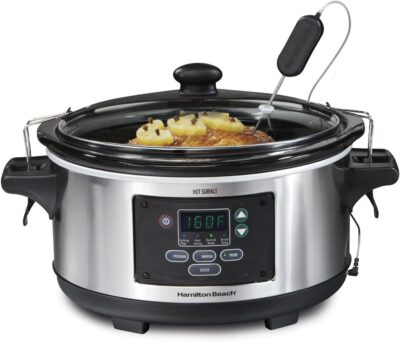 Hamilton Beach Portable 6 Quart Slow CookerBuy on Amazon →
Hamilton Beach Portable 6 Quart Slow CookerBuy on Amazon →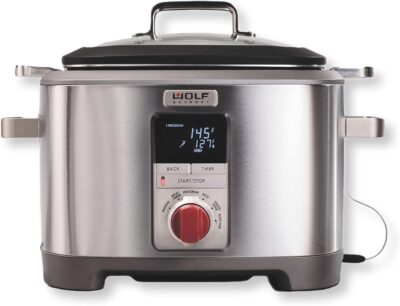 Wolf Gourmet Programmable 6-in-1 Multi CookerBuy on Amazon →
Wolf Gourmet Programmable 6-in-1 Multi CookerBuy on Amazon →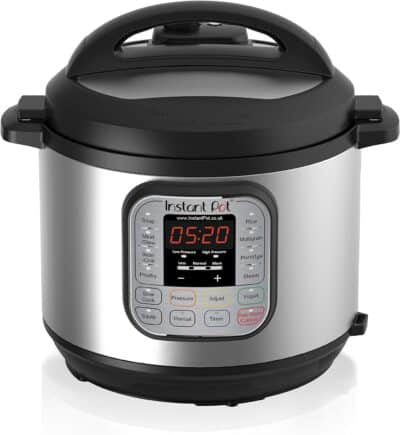 Instant Pot Duo 7-in-1 Electric Pressure CookerBuy on Amazon →
Instant Pot Duo 7-in-1 Electric Pressure CookerBuy on Amazon →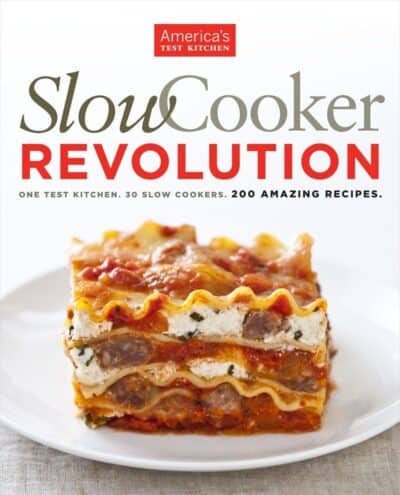 Slow Cooker Revolution: 200 RecipesBuy on Amazon →
Slow Cooker Revolution: 200 RecipesBuy on Amazon → Reynolds Kitchens Slow Cooker LinersBuy on Amazon →
Reynolds Kitchens Slow Cooker LinersBuy on Amazon →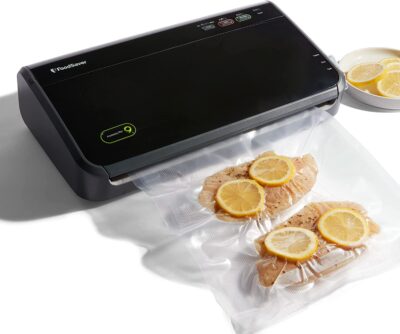 Foodsaver Vacuum SealerBuy on Amazon →
Foodsaver Vacuum SealerBuy on Amazon →Easy Slow Cooker Recipes
Recipes With Pork
Slow Cooker Ribs
Recipes With Pork
Easy Slow Cooker Pulled Pork
Slow Cooker Recipes
Slow Cooker Hoisin Sliders with Sriracha Kale Slaw
Poultry Recipes
Slow Cooker Sweet Chili Chicken Wings
Care and Maintenance Tips for Slow Cookers
A well-maintained slow cooker is not just about cleaning it; it’s also key to making sure your appliance performs for years to come. Here’s how to maintain and care for your crockpot.
1. Regular Cleaning:
- After Every Use: Always unplug the slow cooker and let it cool down. It’s important to let the pot cool as quick temperature changes can cause it to crack. Remove the pot and lid and wash them with warm, soapy water. Check your models instructions to see if the pot and lid are dishwasher safe.
- Tackling Tough Stains: If you encounter stubborn food stains or residues, soak the pot in soapy water for a few hours before scrubbing gently with a sponge or brush.
2. Deep Cleaning:
- Occasional Deep Clean: Periodically, it’s important to deep clean your slow cooker. When it’s cool and not in use, wipe the exterior and the heating element with a damp cloth. Avoid immersing the main body of the cooker in water to prevent electrical damage.
- Removing Odors: If your slow cooker retains food odors, fill the pot with warm water, add a cup of white vinegar or baking soda, and let it sit for an hour before rinsing.
3. Proper Storage:
- Safe Storage: Store your slow cooker in a dry place. Make sure the cord is coiled and not dangling, to avoid any potential damage or hazards.
- Check the Cord: Regularly inspect the power cord for any signs of wear or damage. If you notice any fraying or cracking, it’s time to replace the cooker.
5. Understanding Different Types and Features
- Basic Slow Cookers: These are simple “set-and-forget” models with a few temperature settings (low, high, and warm). Ideal for those who prefer simplicity and straightforward cooking.
- Programmable Slow Cookers: These come with digital timers and temperature controls, allowing more precise cooking. Some models can automatically switch to a ‘keep warm’ setting after cooking.
- Multi-Cookers: These are versatile appliances that combine slow cooking with other functions like pressure cooking, steaming, and sautéing. Great for those who have limited kitchen space but want multiple cooking options.
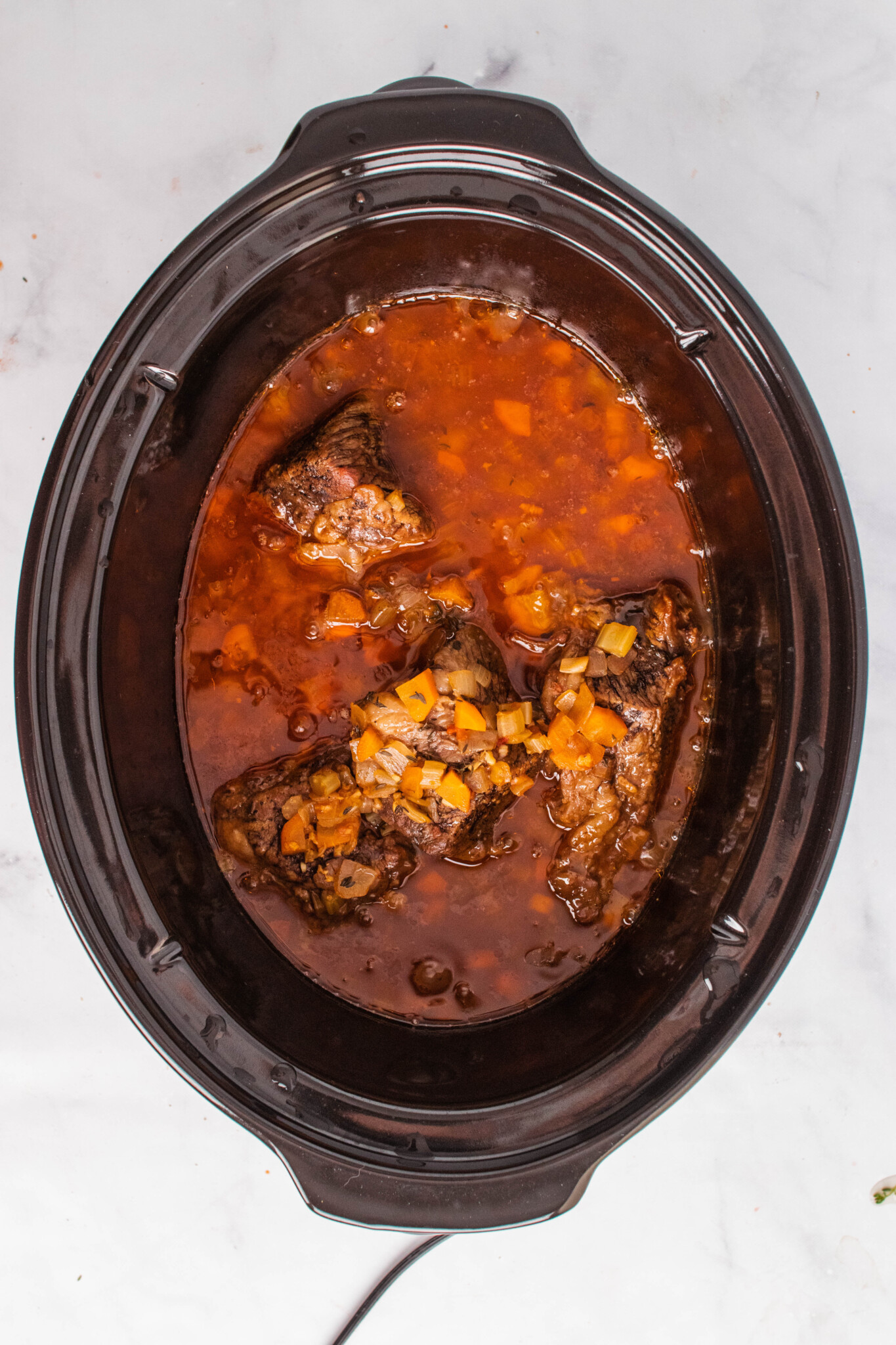
Meat Guides & Resources
Mastering the Basics for Slow Cooker Success:
Slow cooking is an art that combines simplicity with a touch of culinary know-how. Here are a few essential techniques and tips, so you can ensure the best results every time you use your slow cooker.
1. Preparation Methods:
- Browning Meat: For certain recipes, especially those involving beef or pork, consider browning the meat in a pan, of if your slow cooker model has a sear setting, before adding it to the slow cooker. This step enhances the depth of flavor and adds a rich color to the final dish.
- Layering Ingredients: Place ingredients that take longer to cook, like root vegetables, at the bottom of the slow cooker. Place the meat on top of these, as it cooks faster and benefit from the steam and juices released from the vegetables.
2. Temperature Settings:
- Low Setting: Cooking on ‘low’ is ideal for most slow cooker recipes, especially for tougher cuts of meat. This setting typically cooks food at around 200°F and is perfect for all-day cooking or for recipes that require a gentle, prolonged heat.
- High Setting: The ‘high’ setting cooks food faster, usually at about 300°F. It’s suitable for dishes that need less cooking time or for recipes that require a higher temperature to reach the desired texture.
3. Cooking Times:
- General Guidelines: A general rule of thumb is that one hour of cooking on ‘high’ is roughly equivalent to two hours on ‘low.’ However, always refer to specific recipe instructions for precise cooking times.
- Adjusting Times: Be mindful that cooking times can vary based on the model and age of your slow cooker. Start checking your dish an hour before the cooking end time during the first few uses to gauge how your particular slow cooker performs.
4. Managing Moisture:
- Lid Placement: Keep the lid on your slow cooker throughout the cooking process. Removing the lid releases heat and moisture, which can significantly increase the cooking time.
- Thickening Sauces: If your dish has too much liquid towards the end of cooking, remove the lid move the meat and veggies if it’s a roast, and turn up the heat, to reduce and thicken the sauce.
5. Safety:
- Temperature Check: Use a food thermometer to ensure that meat has reached a safe internal temperature before serving.
Newest Slow Cooker Recipes
Beef Recipes
Slow Cooker Beef Shanks
Recipes With Pork
Slow Cooker Pulled Pork Enchiladas
Beef Recipes
Slow Cooker Birria
Poultry Recipes
Whole Chicken in a Crock Pot
Beef Recipes
Slow Cooker Pot Roast
Dinner Recipes
Slow Cooker Italian Stuffed Peppers
Lamb Recipes
Slow Cooker Irish Lamb Stew
Beef Recipes
Slow Cooker Short Ribs
Poultry Recipes
Tailgating Pull Apart BBQ Chicken Bread
Beef Recipes
Slow Cooker Shredded Beef
Dinner Recipes
Copycat Slow Cooker Zuppa Toscana
Slow Cooker Recipes
Slow Cooker Hoisin Sliders with Sriracha Kale Slaw
Dinner Recipes
Simple Slow Cooker Smoked Sausage Chili
Recipes With Pork
Slow Cooker Ribs
Recipes With Pork
Easy Slow Cooker Pulled Pork
Dinner Recipes
Slow Cooker Loaded Veggie Beef Stew
Poultry Recipes
Slow Cooker Sweet Chili Chicken Wings
Dinner Recipes
Slow Cooker Turkey Chili
Dinner Recipes
Slow Cooker Turkey Tacos
Poultry Recipes
Thai Chicken Stew
GC Original
